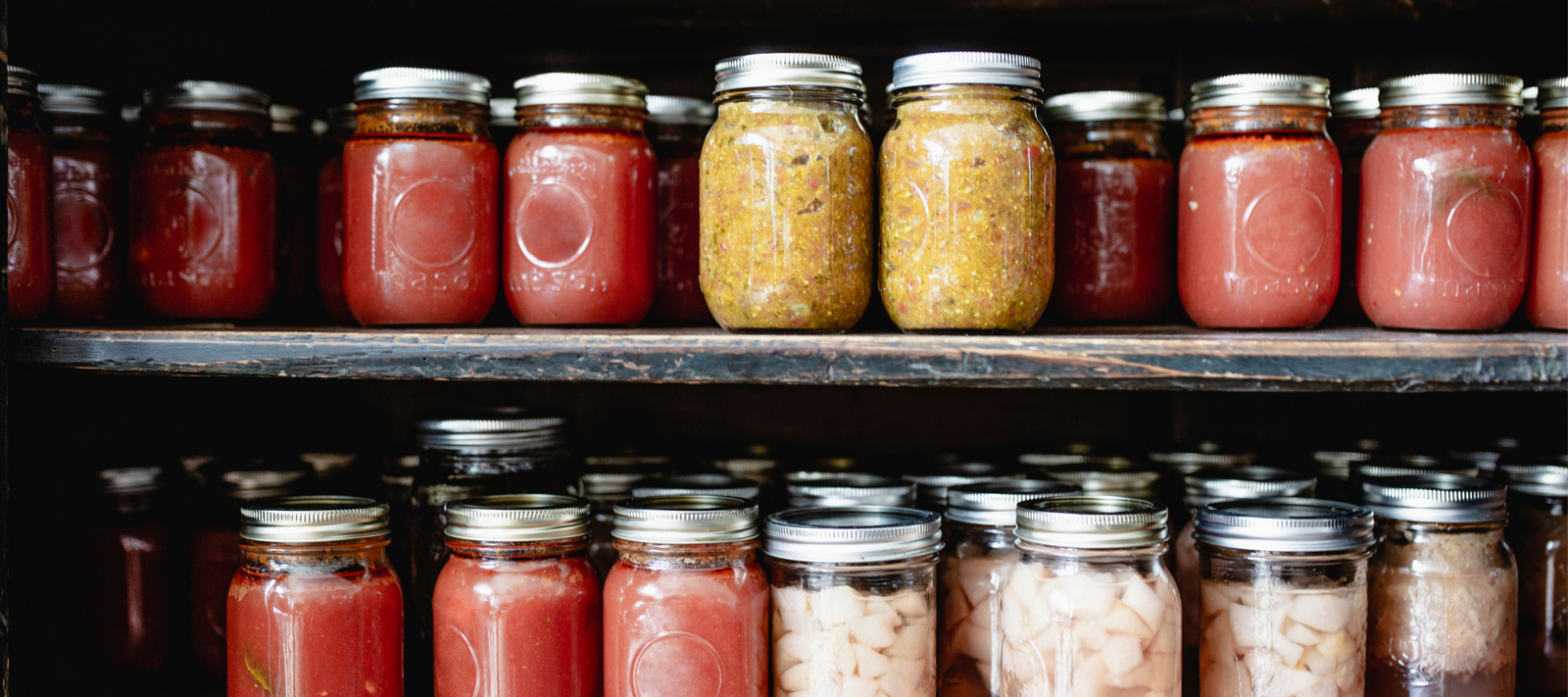When it comes to preserving your food for survival, one of the primary methods used is canning. The word “canning” is a bit of a misnomer because we use glass jars (not metal cans) as the airtight container necessary to prepare our food for long-term storage. This preservation method will usually allow you to store foods for one to five years.
The key elements of canning are making sure to kill any dangerous microorganisms and deactivating any enzymes in the food that could lead to spoilage. This is generally done through heat applied to the food in the jars for a specific amount of time. Different foods need different amounts of time. Because of these differences, there are two primary methods of canning - water bath canning and pressure canning.

Acid is the Key
Which method of canning you will use depends largely on the amount of acid or pH balance of the food you want to store. Acidic foods like fruits, pickled vegetables, and tomatoes with a little added acid (like vinegar or lemon juice) can be safely processed in a water bath canner. Vegetables in plain water or animal products have a more alkaline pH and need more intense processing that isn’t predictable with simple boiling water. That is where the pressure canner comes in.
What Is a Pressure Canner?
A pressure canner is not the same as a pressure cooker although they do have some similar features. A pressure canner is a heavy-duty piece of equipment with a removable rack, pressure gauge, vent, and some way of firmly locking the lid to the pot. The pressure gauge is key. When shopping for a pressure canner, make sure that it is UL (Underwriter Laboratories) certified and preferably approved by the National Center for Home Food Preservation (NCHFP). If the unit meets both of these criteria you can be assured that it is safe to use and capable of preparing food that will be safe to eat. A typical stove-top pressure canner costs roughly between $100 and $400. The new electric pressure canners are also an option, but they are smaller and more costly than a traditional pressure canner.

How Pressure Canning Works
A pressure canner can bring the temperature inside the pot higher than a water bath canner because of the pressure created inside the sealed pot. As the contents heat up, steam gets trapped and pressure builds up. At 15lbs of pressure, water boils at 250 degrees Fahrenheit, almost 40 degrees higher than in a conventional pot. Your local elevation will determine the pounds of pressure needed for your personal canning.
What Is a Water Bath Canner?

A boiling water bath canner can simply be a large stock pot with a rack on the bottom. Canning jars with lids secured are immersed in water and brought to boil for a specified amount of time, based on the canning recipe. (Do not immerse jars into already boiling water. This often results in broken jars from thermal shock. Cold jars, cold water. Hot jars, hot water. But ALWAYS bring to boiling after the jars are submerged.) A water bath canner can only bring the water temperature to that of boiling water.
How to Choose
The thing to remember is that any low acid (a.k.a. alkaline) foods must be processed in a pressure canner. This is because dangerous botulism (clostridium botulinum) spores need either high acid (pH) or a temperature higher than that of boiling water to be killed.
Vegetables that aren’t pickled and all animal products need to be processed in a pressure canner. Acidic fruits and vegetables, pickled vegetables, jams, and jellies can be processed in a water bath. Tomatoes can be processed in a water bath as well as long as you add a little extra acid (lemon juice, citric acid, or vinegar).
The National Center for Home Food Preservation has an excellent guide on canning and which process is best for each type of food you’d like to preserve. They also provide instructions on using a pressure canner and boiling water bath as well as how long processing should take.
Keep it Safe and Simple
Preserving your survival garden harvest for your family is easy and can be worry-free as long as you understand the two methods of canning and apply the correct method as required.
























